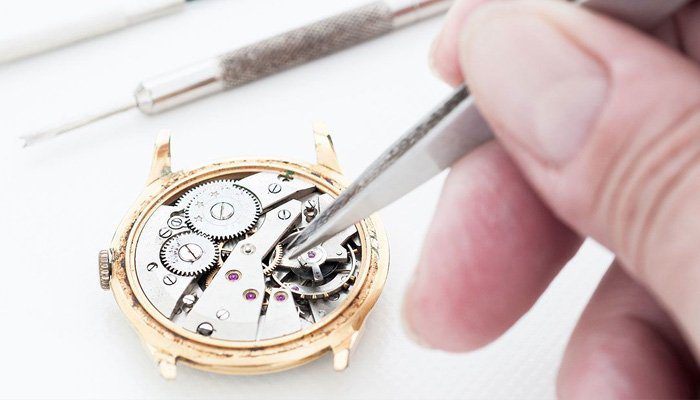Here at CSBEDFORD we see our products as an investment. We find they are often much-loved heirlooms which become handed down through the family from generation to generation. We always advise our customers to take care of their Jewellery and Watches so that they remain in pristine and working condition, as the day you first purchased it.
It’s always important to regularly clean and polish your Jewellery and Watches. For clients that are unsure or simply don’t have the time to do so themselves, we do offer an aftercare service in-store. It’s always worth a yearly inspection carried out by one of our experts in-house. This way we can inspect your items to detect any signs of damage before they become irreparable.
To help ensure that you are looking after your Jewellery to the best of your ability we have provided a few recommended guidelines for you to follow.
1: Reduce wear and tear
Do your best to keep your jewellery away from harsh chemicals that are likely to damage or discolour the surface of your jewellery, for example, things like hair dye, makeup and perfume.
Also, make sure you remove jewellery like earrings, bracelet and necklaces when carrying out manual labour such as housework where cleaning products are also involved.
Avoid handling pearls and gemstones too much, as the natural oils in your skin can dull the surface of the stone.
Ensure that jewellery is temporarily removed before applying any cosmetics and beauty care products.
2: How to clean your gemstones
Be sure to use a non-metallic brush or a soft-bristled tool to remove the fine layer of oils that can build up on the surface of your gemstone jewellery through general wearing over time.
Apply a mild ammonia and water solution or dish detergent to the water and gently massage the stones clean with the brush. If you are using a jewellery cleaner, this must be gentle and non-abrasive, especially when dealing with gemstones.
3: How to take care of pearls
Pearls are resilient and meant to be worn, but they are also delicate and require correct care. As organic gemstones, pearls are vulnerable to acid, alkaline and extremes of humidity.
Avoid letting your pearls coming in to contact with cosmetics, hair spray, or perfume. The lustre can also be harmed by perspiration.
Make your pearls the last thing to put on after getting ready and the first things to remove at the end of the day.
Wipe them gently with a soft cloth to remove any residues before returning to your jewellery box.
It is also a good idea to wrap them in silicone or other soft cloth to prevent damage from other jewellery.
Pearl necklaces are stung on to silk which can stretch or loosen. Be careful not to dip pearls in water or wear while bathing, as water can weaken the silk thread.
It is also best to avoid direct sunlight or high temperatures such as saunas. Even if you don’t wear your pearls often it is advisable to have them restrung yearly to prevent any possible breakages.
4:Taking care of precious metal
Using a simple soap and water solution to clean metals will suffice in keeping your jewellery looking pristine all year through.
Applying alcohol to plain metal designs can, however, help to remove some of the more stubborn residues that can mount up on a piece of well-worn jewellery over time.
Store your jewellery correctly:
It is always wise to wrap your jewellery in tissue or cloth, storing them in a separate compartment inside a jewellery box to avoid potential damage.
5: Looking after your watch
Do keep your watch dry as much as possible and stick to the recommended water-resistant guidelines to ensure water damage does not occur to your timepiece.
Water-resistant watches on leather straps should be kept out of water to preserve the strap.
If saltwater comes into contact with your watch, it is always a good idea to rinse the watch in clean water to ensure all the salt residue is removed. Wherever possible, never expose your watch to extreme temperature changes or excessive shock
6: Handle your watch correctly
Wind automatic watches a total of thirty to forty times at the crown to guarantee optimum torque.
Watch parts such as the crown, the case seal and other water-resistant parts may need replacing every one to two years to ensure[n1] full water-resistant capabilities. You should also ensure that the watch is kept away from hard surfaces to avoid scratching the sapphire crystal glass front and case backs (although offering a hardness of 9 on the Mohs scale – this will only guarantee scratch “resistance’ as opposed to scratch ‘proofing”).
7: The importance of getting your watch serviced
Servicing in accordance with the manufacturer’s schedule will ensure optimum health for your wristwatch. Whether still in warranty or not, we still always recommended periodic servicing or your watch.
Not only will a watch sometimes need re-sealing, but adding new oil may also be required. Over time the chemical make-up of the oil which works in conjunction with bearings made from jewels will change. This means that the springs within the watch will not be powering the drive train properly.
Adding new oil as part of a watch service will ensure that the crown winds smoothly without a “gritty” feel, whilst also enhancing accuracy and a better release of power from the spring coils. Quartz batteries are designed to last up to two years, and so a complete battery replacement is recommended after this period of time.
For further information on aftercare please get in touch with us directly.

